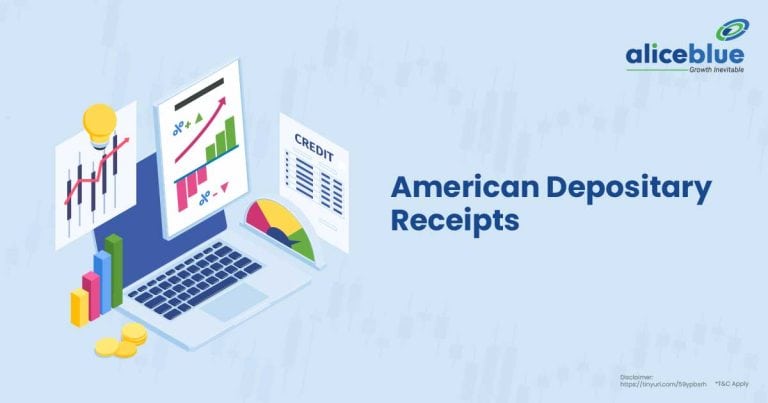The below table shows a list Of the Top Performing Liquid Funds in 10 Years Based on AUM, NAV, and minimum SIP.
| Name | AUM (Cr) | NAV (Rs) | Minimum SIP (Rs) |
| Aditya Birla SL Liquid Fund | 42804.59 | 401.01 | 100 |
| Nippon India Liquid Fund | 32733.81 | 6079.68 | 100 |
| LIC MF Liquid Fund | 10588.63 | 4511.71 | 1000 |
| Baroda BNP Paribas Liquid Fund | 7898.99 | 2864.81 | 500 |
| Edelweiss Liquid Fund | 5428.32 | 3209.40 | 100 |
| Union Liquid Fund | 4309.48 | 2395.72 | 100 |
| Franklin India Liquid Fund-Super | 3082.93 | 3731.83 | 100 |
| Quant Liquid Plan | 2600.85 | 39.92 | 3000 |
| Mahindra Manulife Liquid Fund | 1516.20 | 1617.74 | 100 |
| PGIM India Liquid Fund | 431.71 | 323.98 | 1000 |
Introduction to Top Performing Liquid Funds in 10 Years
Aditya Birla Sun Life Liquid Fund
Aditya Birla Sun Life Liquid Fund is a Liquid mutual fund scheme from Aditya Birla Sun Life Mutual Fund. This fund has been operational for 11 years and 8 months, having been launched on January 1, 2013.
Aditya Birla Sun Life Liquid Fund falls under the Liquid Fund category with an AUM of ₹42,804.59 crores, a 5-year CAGR of 5.35%, an exit load of 0.006%, and an expense ratio of 0.21%. The SEBI risk category is Moderate. Its asset allocation includes 50.55% in Commercial Paper, 27.56% in Certificate of Deposit, 11.53% in Cash & Equivalents, 5.82% in Treasury Bills, and 2.48% in Floating-rate Debt.
Nippon India Liquid Fund
Nippon India Liquid Fund is a Liquid mutual fund scheme from Nippon India Mutual Fund. This fund has been operational for 11 years and 8 months, having been launched on December 31, 2012.
Nippon India Liquid Fund falls under the Liquid Fund category with an AUM of ₹32,733.81 crores, a 5-year CAGR of 5.32%, an exit load of 0.007%, and an expense ratio of 0.2%. The SEBI risk category is Moderately Low. Its asset allocation includes 48.49% in Commercial Paper, 32.48% in Certificate of Deposit, 16.72% in Treasury Bills, 3.20% in Government Securities, and -1.12% in Others.
LIC MF Liquid Fund
LIC MF Liquid Fund is a Liquid mutual fund scheme from LIC Mutual Fund. This fund has been operational for 11 years and 8 months, having been launched on January 1, 2013.
LIC MF Liquid Fund falls under the Liquid Fund category with an AUM of ₹10,588.63 crores, a 5-year CAGR of 5.33%, an exit load of 0.0055%, and an expense ratio of 0.16%. The SEBI risk category is Moderately Low. Its asset allocation includes 53.90% in Commercial Paper, 24.17% in Certificate of Deposit, 22.16% in Treasury Bills, 0.23% in Corporate Debt, and -0.70% in Others.
Baroda BNP Paribas Liquid Fund
Baroda BNP Paribas Liquid Fund is a Liquid mutual fund scheme from Baroda BNP Paribas Mutual Fund. This fund has been operational for 11 years and 8 months, having been launched on January 1, 2013.
Baroda BNP Paribas Liquid Fund falls under the Liquid Fund category with an AUM of ₹7,898.99 crores, a 5-year CAGR of 5.32%, an exit load of 0.0065%, and an expense ratio of 0.17%. The SEBI risk category is Moderately Low. Its asset allocation includes 56.77% in Commercial Paper, 21.62% in Treasury Bills, 21.06% in Certificate of Deposit, and 0.38% in Cash & Equivalents.
Edelweiss Liquid Fund
Edelweiss Liquid Fund is a Liquid mutual fund scheme from Edelweiss Mutual Fund. This fund has been operational for 11 years and 8 months, having been launched on January 1, 2013.
Edelweiss Liquid Fund falls under the Liquid Fund category with an AUM of ₹5,428.32 crores, a 5-year CAGR of 5.37%, an exit load of 0.006%, and an expense ratio of 0.08%. The SEBI risk category is Moderately Low. Its asset allocation includes 48.10% in Commercial Paper, 33.74% in Certificate of Deposit, 21.22% in Treasury Bills, and -3.30% in Others.
Union Liquid Fund
Union Liquid Fund is a Liquid mutual fund scheme from Union Mutual Fund. This fund has been operational for 11 years and 8 months, having been launched on January 1, 2013.
Union Liquid Fund falls under the Liquid Fund category with an AUM of ₹4,309.48 crores, a 5-year CAGR of 5.33%, an exit load of 0.0065%, and an expense ratio of 0.07%. The SEBI risk category is Moderately Low. Its asset allocation includes 40.51% in Commercial Paper, 33.99% in Certificate of Deposit, 17.82% in Treasury Bills, and 7.55% in Cash & Equivalents.
Franklin India Liquid Fund-Super
Franklin India Liquid Fund-Super is a Liquid mutual fund scheme from Franklin Templeton Mutual Fund. This fund has been operational for 11 years and 8 months, having been launched on January 1, 2013.
Franklin India Liquid Fund-Super falls under the Liquid Fund category with an AUM of ₹3,082.93 crores, a 5-year CAGR of 5.34%, an exit load of 0.005%, and an expense ratio of 0.13%. The SEBI risk category is Moderately Low. Its asset allocation includes 29.61% in Commercial Paper, 24.44% in Certificate of Deposit, 21.81% in Treasury Bills, 14.08% in Corporate Debt, and 3.92% in Cash & Equivalents.
Quantum Liquid Fund
Quantum Liquid Fund is a Liquid mutual fund scheme from Quantum Mutual Fund. This fund has been operational for 18 years and 5 months, having been launched on April 3, 2006.
Quantum Liquid Fund falls under the Liquid Fund category with an AUM of ₹2,600.85 crores, a 5-year CAGR of 5.74%, an exit load of 0.007%, and an expense ratio of 0.27%. The SEBI risk category is Moderate. Its asset allocation includes 56.89% in Commercial Paper, 18.88% in Certificate of Deposit, 13.99% in Cash & Equivalents, and 9.97% in Treasury Bills.
Mahindra Manulife Liquid Fund
Mahindra Manulife Liquid Fund is a Liquid mutual fund scheme from Mahindra Manulife Mutual Fund. This fund has been operational for 8 years and 2 months, having been launched on July 4, 2016.
Mahindra Manulife Liquid Fund falls under the Liquid Fund category with an AUM of ₹1,516.20 crores, a 5-year CAGR of 5.37%, an exit load of 0.0045%, and an expense ratio of 0.15%. The SEBI risk category is Moderate. Its asset allocation includes 49.69% in Commercial Paper, 21.33% in Certificate of Deposit, 16.55% in Treasury Bills, 6.21% in Corporate Debt, and 2.69% in Government Securities.
PGIM India Liquid Fund
PGIM India Liquid Fund is a Liquid mutual fund scheme from PGIM India Mutual Fund. This fund has been operational for 11 years and 8 months, having been launched on January 1, 2013.
PGIM India Liquid Fund falls under the Liquid Fund category with an AUM of ₹431.71 crores, a 5-year CAGR of 5.34%, an exit load of 0.0055%, and an expense ratio of 0.13%. The SEBI risk category is Moderately Low. Its asset allocation includes 43.99% in Commercial Paper, 27.63% in Certificate of Deposit, 13.68% in Treasury Bills, 5.59% in Corporate Debt, and 4.46% in Government Securities.

What Are Liquid Funds?
Liquid funds are a type of mutual fund that invests in highly liquid money market instruments and debt securities with very short maturities, typically up to 91 days. These funds aim to provide investors with high liquidity and capital preservation while generating stable returns.
Liquid funds primarily invest in instruments like treasury bills, commercial papers, certificates of deposit, and other money market securities. This composition allows them to maintain high liquidity and low volatility, making them suitable for short-term parking of funds.
These funds are considered low-risk investments due to their focus on high-quality, short-term debt instruments. They offer better returns than traditional savings accounts while providing easy accessibility to invested funds, usually within one business day.
Features Of Top Performing Liquid Funds in 10 Years
The main features of top-performing liquid funds in 10 years include consistent returns, high liquidity, low risk, and professional management. These funds have demonstrated stability and reliability over an extended period, making them attractive for various investment objectives.
- Safety: Top performing liquid funds prioritize capital preservation by investing in high-quality, short-term debt instruments. This focus on safety helps minimize the risk of default and maintains the fund’s stability.
- Liquidity: These funds offer high liquidity, allowing investors to redeem their investments quickly, usually within one business day. This feature makes them ideal for managing short-term cash needs or emergency funds.
- Low volatility: Due to their investment in short-term securities, top performing liquid funds experience minimal price fluctuations. This low volatility provides a sense of stability and predictability for investors.
- Professional management: Experienced fund managers actively manage these funds, making informed decisions about asset allocation and security selection to optimize returns while managing risks effectively.
Best Performing Liquid Funds in 10 Years
The table below shows the Best Performing Liquid Funds in 10 Years Based on the lowest to highest expense ratio.
| Name | Expense Ratio (%) | Minimum SIP (Rs) |
| Union Liquid Fund | 0.07 | 100 |
| Edelweiss Liquid Fund | 0.08 | 100 |
| Franklin India Liquid Fund-Super | 0.13 | 100 |
| PGIM India Liquid Fund | 0.13 | 1000 |
| Mahindra Manulife Liquid Fund | 0.15 | 100 |
| LIC MF Liquid Fund | 0.16 | 1000 |
| Baroda BNP Paribas Liquid Fund | 0.17 | 500 |
| Nippon India Liquid Fund | 0.20 | 100 |
| Aditya Birla SL Liquid Fund | 0.21 | 100 |
| Quant Liquid Plan | 0.27 | 3000 |
Top Performing Liquid Funds in 10 Years In India
The table below shows Top Performing Liquid Funds in 10 Years In India Based on the Highest 3Y CAGR.
| Name | Expense Ratio (%) | Minimum SIP (Rs) |
| Aditya Birla SL Liquid Fund | 0.21 | 100 |
| Mahindra Manulife Liquid Fund | 0.15 | 100 |
| Baroda BNP Paribas Liquid Fund | 0.17 | 500 |
| Quant Liquid Plan | 0.27 | 3000 |
| Union Liquid Fund | 0.07 | 100 |
| Edelweiss Liquid Fund | 0.08 | 100 |
| PGIM India Liquid Fund | 0.13 | 1000 |
| Nippon India Liquid Fund | 0.20 | 100 |
| LIC MF Liquid Fund | 0.16 | 1000 |
| Franklin India Liquid Fund-Super | 0.13 | 100 |
Top Performing Liquid Funds in 10 Years List
The table below shows the Top Performing Liquid Funds in 10 Years List based on exit load, i.e., the fee that the AMC charges investors when they exit or redeem their fund units.
| Name | AMC | Exit Load (%) |
| Mahindra Manulife Liquid Fund | Mahindra Manulife Investment Management Private Limited | 0.00 |
| Franklin India Liquid Fund-Super | Franklin Templeton Asset Management (India) Private Limited | 0.01 |
| PGIM India Liquid Fund | PGIM India Asset Management Private Limited | 0.01 |
| LIC MF Liquid Fund | LIC Mutual Fund Asset Management Limited | 0.01 |
| Aditya Birla SL Liquid Fund | Aditya Birla Sun Life AMC Limited | 0.01 |
| Edelweiss Liquid Fund | Edelweiss Asset Management Limited | 0.01 |
| Baroda BNP Paribas Liquid Fund | Baroda BNP Paribas Asset Management India Pvt. Ltd. | 0.01 |
| Union Liquid Fund | Union Asset Management Company Pvt. Ltd. | 0.01 |
| Quant Liquid Plan | Quant Money Managers Limited | 0.01 |
| Nippon India Liquid Fund | Nippon Life India Asset Management Limited | 0.01 |
Factors To Consider When Investing In Top Performing Liquid Funds in 10 Years
The main factors to consider when investing in top performing liquid funds in 10 years include the fund’s historical performance, expense ratio, portfolio composition, and fund house reputation. These factors can significantly impact your investment returns and overall experience.
- Fund performance: Analyze the fund’s performance over different time periods, especially during market downturns. Consistent performance indicates the fund’s ability to manage risks effectively and generate stable returns.
- Expense ratio: Look for funds with lower expense ratios, as these costs directly impact your returns. A lower expense ratio means more of your money is actually invested and working for you.
- Credit quality: Examine the fund’s portfolio to ensure it primarily invests in high-quality, low-risk securities. This helps minimize the risk of default and maintains the fund’s stability.
- Fund size: Consider the fund’s Assets Under Management (AUM). Larger funds may offer better liquidity, while smaller funds might be more nimble in their investment approach.
How To Invest In Top Performing Liquid Funds in 10 Years?
To invest in top performing liquid funds with a 10-year track record, start by researching funds that have consistently performed well over this period. Compare their returns, expense ratios, and risk profiles. You can invest through a broker like Alice Blue or directly with the fund house.
Once you’ve selected a fund, complete the Know Your Customer (KYC) process if you haven’t already. This typically involves submitting identity and address proof. After KYC verification, you can invest online or offline by filling out the application form and making the payment.
Consider setting up a Systematic Investment Plan (SIP) for regular investments or make a lump sum investment based on your financial goals and liquidity needs. Regularly review your investment’s performance and rebalance if necessary to ensure it aligns with your financial objectives.
Advantages Of Investing In Top Performing Liquid Funds in 10 Years?
The main advantages of investing in top performing liquid funds with a 10-year track record include proven stability, consistent returns, high liquidity, and professional management. These funds offer a balance of safety and returns for short-term investments.
- Capital preservation: These funds prioritize preserving your capital by investing in high-quality, short-term debt instruments. This focus on safety helps protect your investment from market volatility.
- Consistent returns: Top performing liquid funds with a 10-year track record have demonstrated their ability to generate stable returns over an extended period, often outperforming traditional savings accounts.
- High liquidity: These funds typically allow you to redeem your investments within one business day, making them ideal for managing short-term cash needs or emergency funds.
- Low volatility: Due to their investment in short-term securities, these funds experience minimal price fluctuations, providing a sense of stability and predictability for investors.
Risks Of Investing In Top Performing Liquid Funds in 10 Years?
The main risks of investing in top performing liquid funds with a 10-year track record include interest rate risk, credit risk, and reinvestment risk. While these funds are generally considered low-risk, it’s important to understand potential challenges.
- Interest rate risk: Changes in interest rates can affect the fund’s returns. When rates rise, the value of existing bonds in the portfolio may decrease, potentially impacting the fund’s performance.
- Credit risk: Although liquid funds invest in high-quality securities, there’s still a small risk of default by the issuers of these instruments, which could affect the fund’s returns.
- Reinvestment risk: As liquid funds invest in short-term securities, there’s a risk that maturing investments may need to be reinvested at lower rates, potentially reducing overall returns.
- Concentration risk: Some funds may have a high concentration in certain sectors or issuers, which could increase risk if those areas face challenges.
Importance of Liquid Funds
The main importance of liquid funds lies in their ability to provide a balance between safety, liquidity, and returns for short-term investments. They offer an efficient way to manage cash and earn better returns than traditional savings accounts.
- Capital preservation: Liquid funds prioritize protecting your principal investment by focusing on high-quality, short-term debt instruments. This approach helps minimize the risk of capital loss.
- Emergency fund management: These funds are ideal for maintaining emergency funds, offering quick access to your money while potentially earning better returns than a savings account.
- Short-term goal planning: Liquid funds can be an effective tool for saving towards short-term financial goals, providing a stable growth option without locking in your money for extended periods.
- Cash management for businesses: Companies can use liquid funds to manage their working capital efficiently, earning returns on idle cash while maintaining high liquidity.
How Long to Stay Invested in Liquid Funds?
The ideal investment duration for liquid funds is typically short-term, ranging from a few days to a few months. These funds are designed for temporary parking of funds or meeting short-term financial goals. They’re not meant for long-term wealth creation like equity funds.
However, some investors use liquid funds as part of their asset allocation strategy for longer periods. In such cases, they might keep a portion of their portfolio in liquid funds to manage risk and maintain liquidity, while investing in other funds for long-term growth.
Tax Implications of Investing in Liquid Funds
The tax implications of investing in liquid funds depend on the holding period. For investments held for less than three years, gains are considered short-term capital gains and taxed at your income tax slab rate. For holding periods over three years, gains are treated as long-term capital gains.
Long-term capital gains from liquid funds are taxed at 20% with indexation benefits. Indexation adjusts the purchase price for inflation, potentially reducing your tax liability. It’s important to consult a tax professional for personalized advice based on your financial situation.
Future of Liquid Funds
The future of liquid funds in India looks promising, with increasing awareness about their benefits for short-term investments and cash management. As investors seek alternatives to low-yielding savings accounts, liquid funds are likely to gain more popularity for their balance of safety and returns.
Technological advancements and digital platforms are making liquid funds more accessible to retail investors. This ease of access, combined with their inherent benefits, positions liquid funds as a key component in modern portfolio management strategies for both individuals and businesses.

Top Performing Liquid Funds in 10 Years FAQs
Liquid funds are a type of debt mutual fund that invests in short-term market instruments like treasury bills, certificates of deposit, and commercial papers. They provide high liquidity, low risk, and steady returns, making them ideal for parking surplus funds for short durations.
Top Performing Liquid Funds in 10 Years #1: Aditya Birla SL Liquid Fund
Top Performing Liquid Funds in 10 Years #2: Nippon India Liquid Fund
Top Performing Liquid Funds in 10 Years #3: LIC MF Liquid Fund
Top Performing Liquid Funds in 10 Years #4: Baroda BNP Paribas Liquid Fund
Top Performing Liquid Funds in 10 Years #5: Edelweiss Liquid Fund
These funds are listed based on the Highest AUM.
The best performing liquid funds based on expense ratio over the last 10 years include Union Liquid Fund, Edelweiss Liquid Fund, Franklin India Liquid Fund-Super, PGIM India Liquid Fund, and Mahindra Manulife Liquid Fund. These funds offer competitive returns while maintaining low expense ratios, making them attractive for short-term investments.
To invest in the best liquid funds, research top-performing funds, and compare their returns and expense ratios. Complete the KYC process if needed. Use a broker like Alice Blue or invest directly with the fund house. Choose between a lump sum investment or a systematic investment plan (SIP).
Investing in top performing liquid funds with a 10-year track record can be good for short-term goals or cash management. They offer stability, consistent returns, and high liquidity. However, for long-term wealth creation, consider diversifying into other types of mutual funds.
Yes, you can buy top performing liquid funds with a 10-year track record. These funds are open for investment to retail investors. You can purchase them through various channels, including online platforms, brokers, or directly from the fund house after completing the necessary KYC formalities.
We hope you’re clear on the topic, but there’s more to explore in stocks, commodities, mutual funds, and related areas. Here are important topics to learn about.
Disclaimer: The above article is written for educational purposes, and the companies’ data mentioned in the article may change with respect to time The securities quoted are exemplary and are not recommendatory.








